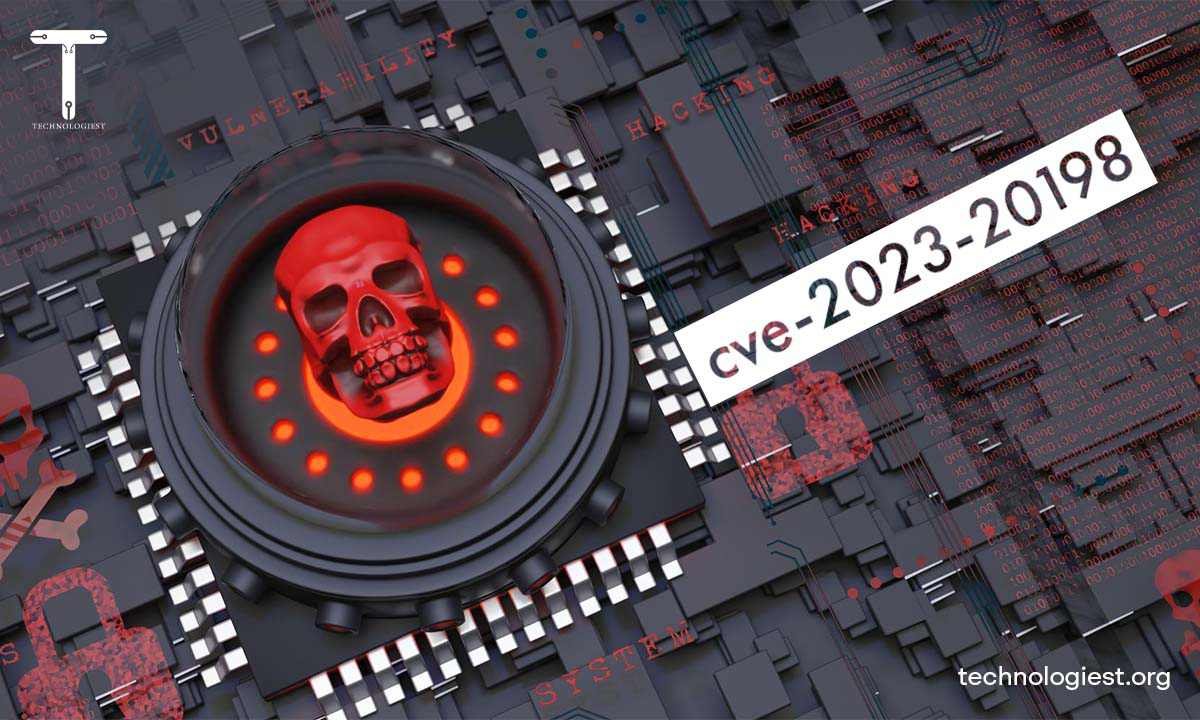
With cybersecurity always evolving, the emergence of vulnerabilities such as CVE-2023-20198 has created a great deal of concern and urgency.
This article aims to provide information on CVE-2023-20198, a covert vulnerability that compromises the security of specific programs and systems.
By delving into the specifics of this weakness and its exploit, we navigate the terrain of potential dangers and arm ourselves with safeguards against its horrifying repercussions.
What is CVE-2023-20198?
CVE-2023-20198 refers to a critical vulnerability discovered in certain software or systems.
This particular vulnerability poses a substantial risk due to its potential exploitation by threat actors to gain unauthorized access, execute arbitrary code, or compromise system integrity.
Understanding The Exploit
On 16th October 2023, CISCO highlighted a software Web UI Privilege Excalation Vulnerability under its identifier CVE-2023-20198 and that too with a score of 10 in CVSS.
Cisco noted that this vulnerability can lead to unauthenticated attackers creating the ‘privilege level 15 access’.
The attacker can use an implant to achieve its arbitrary command where the implant gets installed successfully.
The web server needs to be restarted to have the implant added successfully.
When you have heightened administrator privileges and the potential for achieving arbitrary code executions, then an attacker can gain control over your entire system.
What is The Initial Disclosure of CVE-2023-20198?
When collaborating with this disclosure, Cisco Talos was seen to publish the threat advisory.
Real-world scenarios have highlighted the detrimental effects of CVE-2023-20198. Based on this, the implementation was delivered through the ‘yet undetermined mechanism’ where there is no patch possible.
“We leverage the existing detections, but observe the actor exploiting CVE-2021-1435, where Cisco provides the patch in 2021.’’
The broader impact extends beyond individual systems, affecting businesses, users, and the overall security posture within various sectors.
Later in the threat advisory, a Snort intrusion detection system was added to address this ‘added’ threat.
The Snort rule 3:50118:2 “SERVER-WEBAPP Cisco IOS XE Web UI command injection attempt’ is not included in any mention where it showcases CVE-2021-1435.
Eliminating Cisco IOS XE CVE-2023-20198
Cisco released the patch for IOS XE release train 17.9 with plans to patch other options.
Organizations are told to follow Cisco with updates precisely along with patching their vulnerabilities in IOS XE with software.
If the patch is not applicable or available you can use some mitigation measures that organizations can apply to defend themselves from CVE-2023-20198 attacks.
(i) Disable The Https Server Feature: The vulnerability within the web UI characteristics of Cisco IOS XE poses a threat to internet-exposed devices.
Organizations should immediately disable both HTTP and Https servers for any public-facing physical or virtual devices until the patch is available.
(ii) Restrict Access To Http Server Features: In scenarios where complete disabling of Http or Http server features isn’t feasible, institutions are advised to implement strict access controls.
Trusted networks should be granted exclusive access to these services, reducing vulnerability exposure.
(iii) Check For Undefined User Accounts in Cisco IOS XE: Exploitation of CVE-2023-20198 might involve the creation of unauthorized user accounts.
Security teams should conduct thorough checks within their local user base, searching for any unknown or suspicious accounts.
Examples include usernames like ‘cisco_tac_admin’ or ‘cisco_sys_manager,’ which could indicate unauthorized access.
(iv) Check For Implants: Malicious users might implant code for reentry after the initial compromise.
Organizations can utilize specific commands to detect such implants, usually returning a hexadecimal string as confirmation.
Regular checks using these commands add an additional layer of defense against potential reentry points for attackers leveraging CVE-2023-20198.
(v) By putting these precautions into place together with the fixes that Cisco has supplied, it is possible to take proactive steps to reduce the risks associated with CVE-2023-20198 until a long-term fix is found.
May You Like Also: 06shj06: Unlocking The Story Behind Innovation’s Journey
Conclusion: Safeguarding Against CVE-2023-20198
CVE-2023-20198 serves as a sobering reminder of the vulnerabilities ingrained in our technical infrastructure in the always-changing field of cybersecurity.
Its importance ripples through systems and sectors, highlighting the need for alertness and preventative action.
The discovery of CVE-2023-20198 brings players in the cybersecurity space to a crucial crossroads.
The possible consequences of the exploit, which include system compromise and unauthorized access to data, highlight how urgent mitigation measures must be.
Even if they are frightening, real-world examples teach us important lessons about the destruction caused by this vulnerability to organizations that are unable to face its looming threat.
Mitigating the risks posed by CVE-2023-20198 demands a multifaceted approach.
Immediate action encompasses the diligent application of patches and updates released by software vendors, fortifying vulnerable entry points.
However, the responsibility transcends mere reactive responses; it extends to cultivating a robust security culture.
Embracing proactive measures, such as regular security audits, access control mechanisms, and heightened user awareness, erects formidable barriers against potential exploitation.
You May Like Also:
3 thoughts on “Understanding CVE-2023-20198: Exploring Risks, Exploits, and Safeguards”